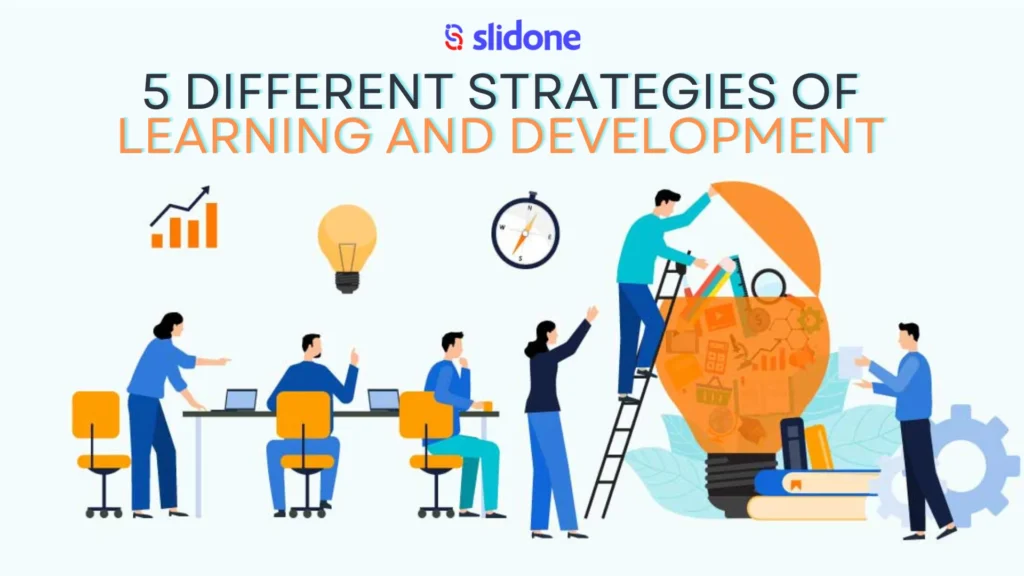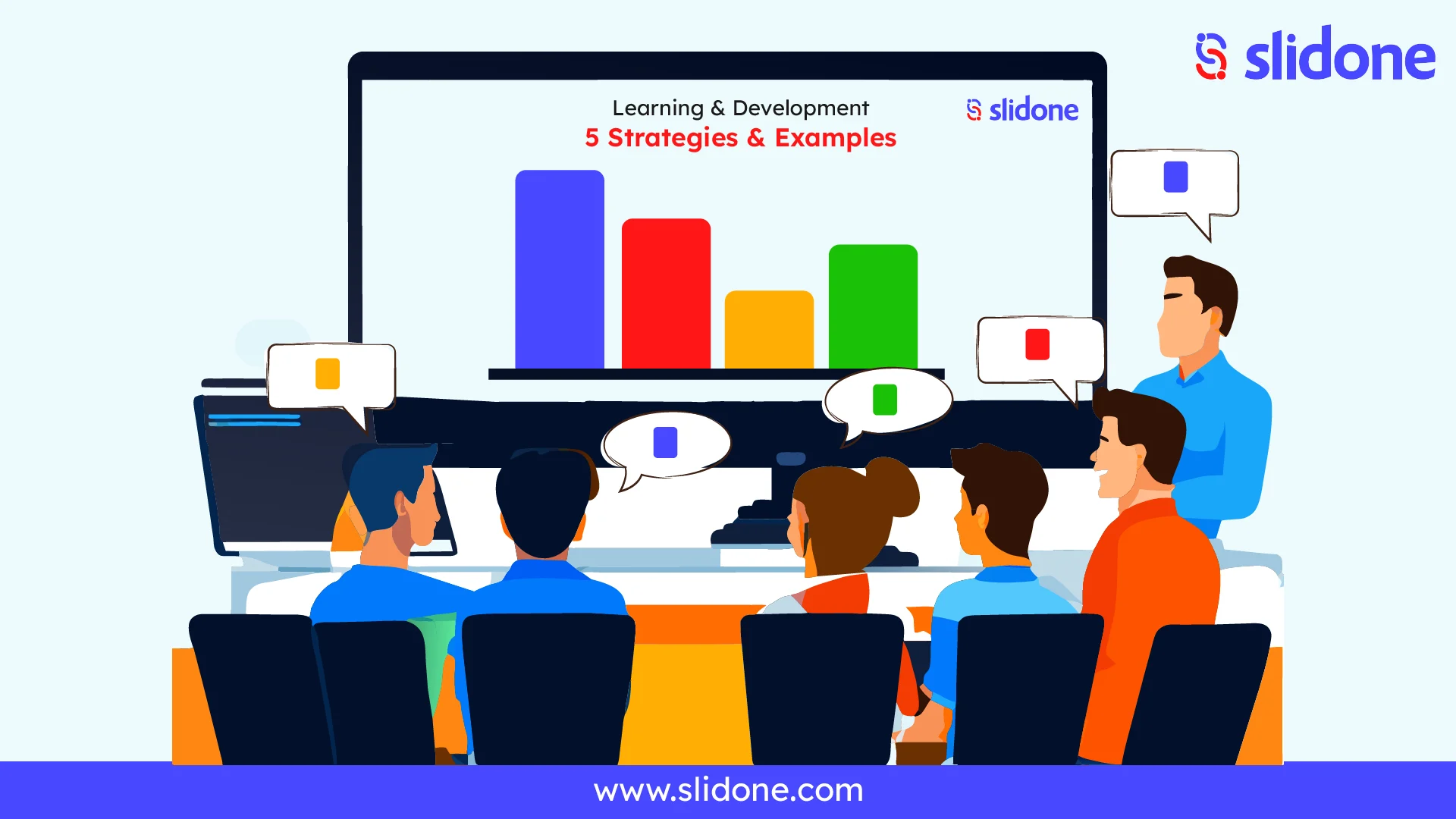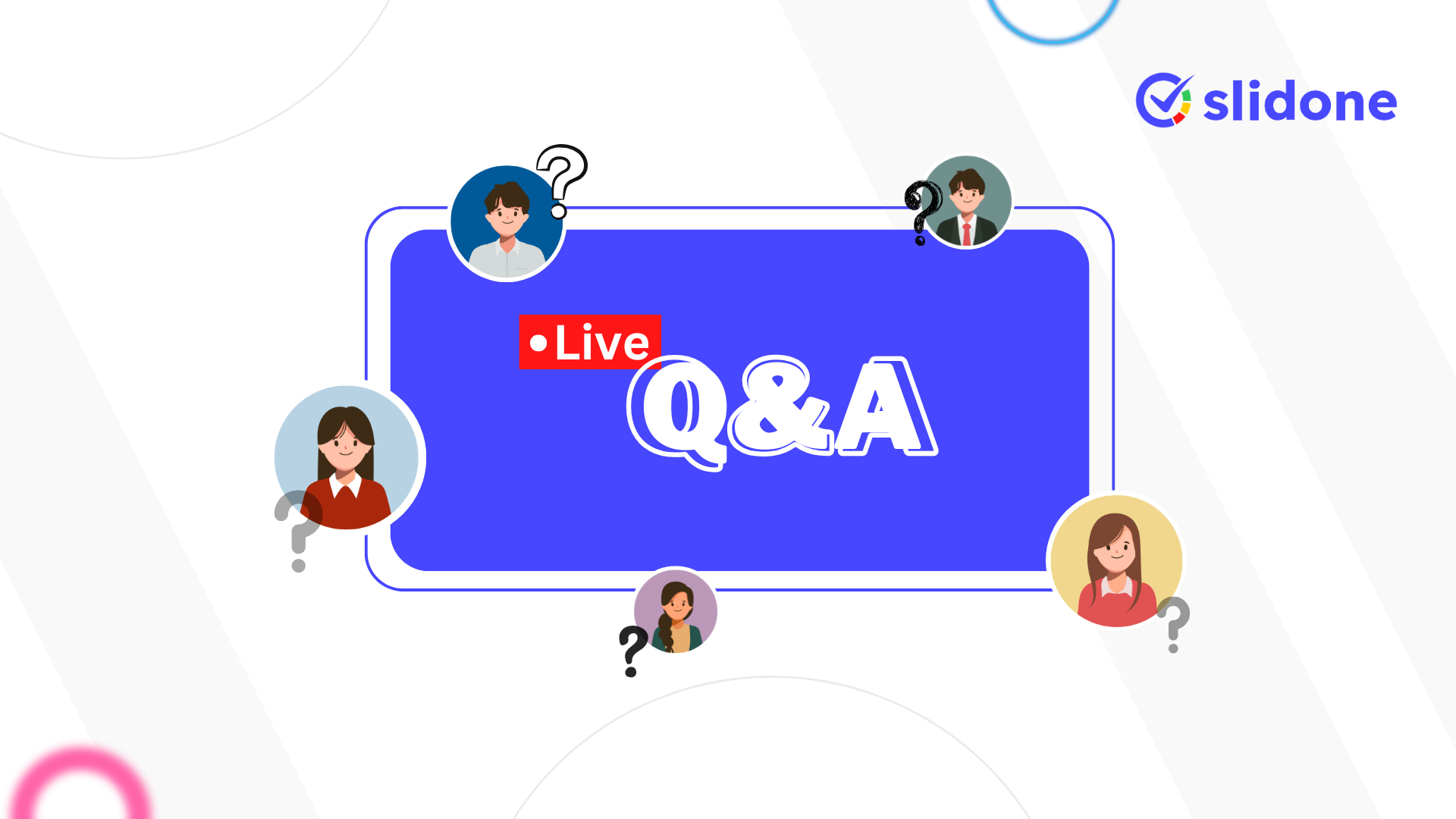Continuous learning and development are parameters that are quite essential in today’s fast-running world, both for professional and personal enhancement. L&D plays a very important role in establishing individuals and organizations that are competitive in nature in every workplace or educational setting. As technology is gradually upgraded, so do the working demands. In this blog, we will discuss what L&D is, its importance, and five feasible strategies to enable the accomplishment of successful learning and development programs. These strategies will help make sure learning stays impactful, aligned, and current with changing needs.
What is Learning and Development?
L&D is the formal way in which skill, knowledge, and competency development among employees are arranged to enhance their performance in their present role or for their future role in view within the organization. It ranges from formal training to on-the-job learning, mentorship, e-learning modules, workshops, and everything that falls in between.
Learning and development is something that does not occur as a single event but is rather a full process-one that includes continuous education and enhancement of skills. For example, an Marketing professional learning the latest techniques in marketing or a team leader with new management skills both attest to L&D in application. These activities benefit not only the employees through adding to their use value but also the organizations through enhanced overall productivity and assured adaptability of employees to changes within their respective industries.
Suppose a customer service representative is put through some training regarding new software. Inability to manage customer queries without proper training frustrates and tires from trying. But if an L&D program is carried out for him, he will apply this learning in handling the software and will do better facilitation of the customers while gaining more confidence in his job.
Why is L&D Important?
The need for continuous learning has never been higher. Along with fast-changing technologies, the evolution of industry standards requires employees to be continuously upgrading their skills. L&D helps bridge the skill gaps and helps employees stay relevant by creating an innovative environment.
In today’s knowledge-based economy, failure to invest in L&D will surely keep an organization behind their competitors. Employees with continuous training are not only more engaged but satisfied with their jobs, and have low turnover rates. According to a survey conducted by PwC, 74% of employees said they are ready to learn new skills or retrain to remain employable in the future.
New technologies, such as telemedicine and AI-powered diagnostics, have revolutionized the health sector. Professionals in this field must continually update their knowledge and adapt to emerging technologies to provide quality service. In fact, in the absence of well-structured L&D programs, these professionals could find it really challenging to handle the ever–changing requirements of their professions.
5 Different Strategies of Learning and Development with Examples

Now that we’ve established the importance of L&D, let’s dive into five effective strategies that organizations can implement to ensure successful learning and development for their teams.
1. Conduct a Training Needs Assessment
Any L&D intervention should start with the determination of the exact learning needs of the employees; therefore, conducting a Training Needs Assessment is important. A needs assessment shows the gaps between competencies and skills currently held and those needed to meet requirements for needed competencies. The process ensures that training programs meet the real needs of the workforce and are thus effective.
The needs assessment done by, say, a retail company to improve its sales team’s performance may list the inability of the team to handle certain sales software. Once that need is identified, it is easy to make specific training programs toward filling those gaps.
Any organization without needs assessment risks wasting time and resources on training that will not meet employees’ needs; thus, the outcome will be less engagement and performance.
2. Create a Learning Culture
One of the most important strategies that make L&D succeed is creating a learning culture that supports and encourages employees in skill development on a continuous basis. That would mean, under such a culture, learning is made a part of the daily operation, not some sort of one-time event. A strong learning culture ensures curiosity, collaboration, and innovation.
Companies like Microsoft and Google have very strong learning cultures. The growth mindset philosophy at Microsoft lets employees embrace challenges and persist in learning new skills. Meanwhile, the 20% time policy adopted by Google allows employees to spend 20% of their work time exploring new ideas and learning new skills.
Continuous learning culture could, therefore, be developed within a small-scale organization through the conduction of frequent learning sessions, through mentorship programs, or even just by allowing employees to share knowledge with other fellow employees.
3. Use Different Learning Methods
Organizations should provide a mix of learning methodologies that would address different learning preferences. Learning methodologies may range from face-to-face workshops, e-learning modules, self-paced courses, and interactive presentations. Among the various effective ways, using an interactive presentation software has been quite effective, whereby employees engage in quizzes, live polls, and interactively working slides.
For example, interactive presentations during online training sessions make the whole process of learning more interactive and involving. The employees will participate in some quizzes or give their feedback through live polls, therefore enhancing retention and ensuring that people do not passively attend the sessions. You can combine slideshows, quizzes, and video tutorials in a comprehensive way to address the different learning styles of different employees and make your training effective.
4. Create a Continuous Feedback Culture
Feedback is one of the essential elements of any learning and development. Continuous feedback would enable the employees to understand their performance and further improvements to be made, that too by fine-tuning their skills. Creating a culture where feedback would form part of work life makes organizations ensure that learning is one continuous cycle of improvement.
For instance, organizations may solicit feedback from participants and trainers concerning the leadership training program. The responses will help in assessing what was done right and what was not done as well. Continuous feedback will ensure that employees learn from experiences and that necessary adjustments are made towards improving their skills with time.
5. Measure Impact
After all, it is as important to measure the impact of your L&D initiatives as it is to implement them. Without measuring the impact, one cannot ascertain whether efforts put in are having a positive consequence on the organizations. Metrics on improved employee performance, improved retention rates, and productivity can be used to assess the effectiveness of training programs.
For example, a company instituted new project management software training. It can measure how projects were being executed efficiently before and after the training. It will tell them if such training works in increasing teams’ productivity.
The process also includes a series of assessment tools, such as post-training evaluations and employee surveys, to measure the absorption of training and how well it is applied in real-world scenarios. This data will be instrumental in further fine-tuning L&D strategies at the company.
Conclusion
Training is thus the backbone of Learning and Development. Without some regulated method of training, it may not be that easy for the employees to learn what they need to know in order to become proficient performers of their duties. This provides a competent, motivated workforce able to adapt to change and drive organizational success. As organizations continue to evolve, the need for effective L&D strategies will only grow. Organizations achieve a sustainable future of growth and success through training needs assessment, continuous learning culture, and putting into practice innovative learnings.
This is a long-term investment in L&D. The better the training of the workforce, the more productive it is, but above all, more engaged and more loyal. This automatically means both they and the organization they come from are better off.





Leave a Comment
Your email address will not be published. Required fields are marked *